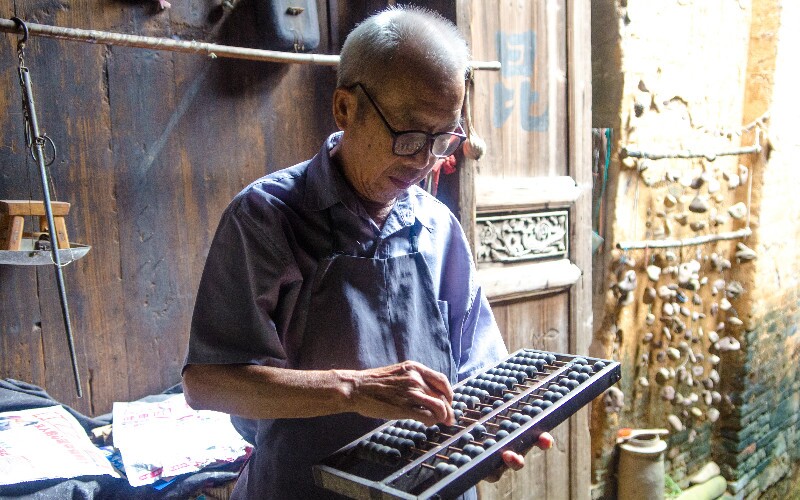In this way, the beads have been knocking for over two thousand years. History of the chinese suanpan abacus.

The Chinese Abacus, History, How To Use The Chinese Abacus
The chinese abacus was invented around 500 b.c.
When was the chinese abacus invented. Such an abacus is also referred to as a. When was the chinese abacus invented? According to chinese historical past, the abacus as we all know it was invented someday throughout the ming dynasty by mathematician cheng dawei.
The abacus is called “suanpan” (算盤, calculating pan) in china. The ming dynasty lasted from 1388 to 1644 and was a period of cultural exchange and economic prosperity, at least in part. Where was abacus first used?
The abacus, which is still commonly used today, was invented by the chinese back in 3000 bc as a substitute for counting with fingers. It was invented by mathematician named cheng dawei, from the ming dynasty.the abacus was later improved by mathematician xu yueh at the end of the eastern han dynasty. Even so, the first abacus is believed to go far back to mesopotamia and the sumerian culture between 2700 and 2300 bce.
Some historians believe that the abacus was invented by the ancient chinese while some believe that it was invented by the babylonians or the egyptians. The abacus can be used to perform addition, subtraction,, and multiplication. The abacus is not an ancient chinese invention.
The abacus origin is not exactly established. The sort of abacus mostly used as we speak was invented in china across the 2nd century b.c. It is often believed that it was invented in china , however this is incorrect.
These claims are supported by historical evidence such as ancient texts and archaeological excavations. The abacus was invented in the ancient empire of mesopotamia approximately in the year 3000 bc. Such an abacus is also referred to as a 2/5 abacus.
The word abacus comes from a greek word ‘abax’ or ‘abakon’ meaning ‘tabular form’, possibly derived from a semitic word ‘abq’ or ‘sand’. The abacus was invented in china, around 1300 bc. Whenever there was a calculation, there was an abacus.
There is a divider that separates the left and right strings of beads. The chinese kind has beads strung on wires or thin wood rods. The earliest known written documentation of the chinese abacus dates to the 2nd century bc (chinese han dynasty).
It was popularized during the ming dynasty (1368 ad to 1644 ad), and has been a very popular calculating device ever since. It is the most primitive form of calculating or counting device. When was exactly abacus created?
Although there is no reliable evidence that credits a specific person as its creator, its invention is attributed to the mesopotamian culture in general. It probably was invented somewhere between 300 and 500 bc. The type of abacus most commonly used today was invented in china around the 2nd century b.c.
So for the record, the existence of chinese abacus can be dated back from the 14 century a.d. It is presumed that the earliest abacus was invented about 5000 years ago. And is known as the fifth invention of ancient china.
But it's fun to use, so we included it. In ancient times some of the counting devices used were salamis tablet, roman calculi. Known as the fifth invention of ancient china, the abacus can perform addition, subtraction, division and multiplication;
What is the history of abacus? It was however, most commonly used in rome back in 2400 bc. According to chinese history, the abacus as we know it was invented sometime during the ming dynasty by mathematician cheng dawei.
The abacus is one in all many counting gadgets invented to assist rely giant numbers. The ming dynasty lasted from 1388 to 1644 and was a interval of cultural alternate and financial prosperity, at the least partially. Abacus was invented by tim cranmer.
Suanpan is the chinese version of the abacus, invented in the 1200 c e, which was during the ming dynasty. The chinese abacus is reported to have been invented during the ming dynasty by cheng dawei. The abacus was invented in china, around 1300 bc.
It was mentioned in a 2nd century bc chinese document, and versions may have been used for thousands of years prior. On each rod, the classic chinese abacus has 2 beads on the upper deck and 5 on the lower deck; And since chinese are known to relate their ways of like to its environment the attributes such as the top and bottom are considered heaven and earth respectively.
It was popularized during the ming dynasty (1368 ad to 1644 ad), and has been a very popular calculating device ever since. On each rod, the classic chinese abacus has 2 beads on the upper deck and 5 on the lower deck; It was an influenced version of the earlier versions, hence the inventor’s credits go to the ancient chinese in general.